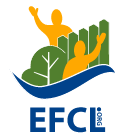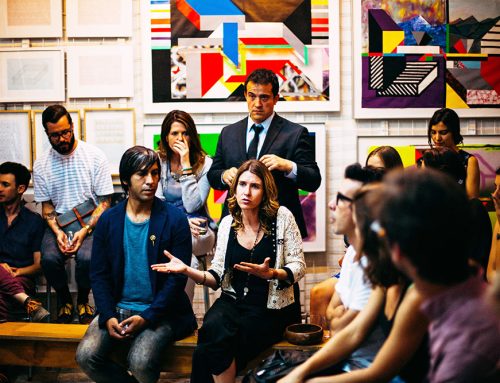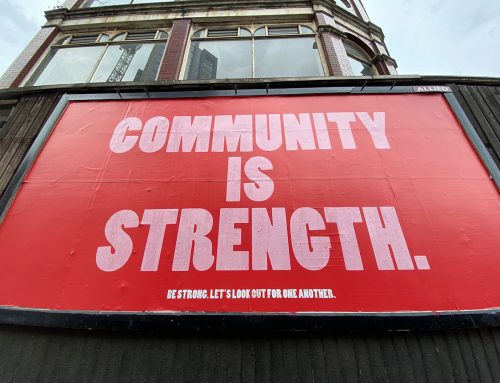With a new council and bold plans that guide us to a city of two million people, we’re talking about the future of transportation and mobility.
How can we meet climate targets and follow through responsibly on Edmonton’s 2019 declaration of a climate emergency? What does it mean to decarbonize our transportation system and create liveable, vibrant and flourishing 15 minute neighborhoods across the city?
THE FRONT PAGE
The Future of Mobility – Edmonton at 1.25 Million

Photo courtesy of photos.edmonton.ca
With a new council and bold plans guiding us to a city of two million people, we’re talking about the future of transportation and mobility.
The City Plan, our municipal development plan, envisions a mass-transit network that supports and improves the sustainability, performance and experience of our city.
Transportation is one of the four major sources of greenhouse gas emissions within Edmonton, making up approximately 30 per cent of all emissions.
How can we meet climate obligations and follow through responsibly on Edmonton’s 2019 declaration of a climate emergency? What does it mean to decarbonize our transportation system and create liveable, vibrant and flourishing 15 minute neighborhoods across the city?

Photo courtesy of photos.edmonton.ca
While it can be hard to imagine, Edmonton – like most Canadian cities – was once a streetcar city. It’s widely acknowledged that Edmonton’s most popular public walking streets coincide with historic streetcar routes.
Jasper Avenue, Whyte Avenue, 124 Street, Alberta Avenue, 95 Street, 97 Street, 109 Street are all former streetcar routes and remain some of the most diverse streets in Edmonton today.
Similarly, the streetcar suburbs that routinely appear on Edify’s top neighborhoods list developed alongside these systems and were built for walking, cycling and transit. They often have a mixed-use character, desirable public spaces and are incubators for small business.
 The history and disappearance of the streetcar is complex but followed a trend towards private automobiles that swept North American cities in the 1950s. Like we face today, this transition was a choice.
The history and disappearance of the streetcar is complex but followed a trend towards private automobiles that swept North American cities in the 1950s. Like we face today, this transition was a choice.
Understanding the social, physical and financial impacts of this choice is instructive for us today as we consider a range of opportunities to develop the next big mobility transition.
For Leagues and Edmontonians, a transition to 50 per cent of trips made by transit and active transportation will not be about individual sacrifice. To be successful, Edmontonians will need to see, feel and experience the benefits felt elsewhere in the world.
It’s about safety, affordable and diverse housing, vibrant public spaces, sustainable schools, flourishing employment, improved access and real choice in how we move around the city.
 On February 22, the Urban Planning Committee of Edmonton’s City Council, met to discuss how Edmontonians will pursue this vision as we grow towards 1.25 million and onwards to two million people.
On February 22, the Urban Planning Committee of Edmonton’s City Council, met to discuss how Edmontonians will pursue this vision as we grow towards 1.25 million and onwards to two million people.
Administration identified a network that includes the expansion of LRT routes and consideration of additional mass transit options that include Bus Rapid Transit (BRT), limited stop and frequent bus routes.
 The LRT network will provide key city-wide routes. High-floor LRT will operate as it does today while the urban-style, low-floor Valley Line will operate in a dedicated right-of-way with more integration into the surrounding streetscape, communities and destinations.
The LRT network will provide key city-wide routes. High-floor LRT will operate as it does today while the urban-style, low-floor Valley Line will operate in a dedicated right-of-way with more integration into the surrounding streetscape, communities and destinations.
A growing coalition of community members and Leagues see the benefits. Like many examples across the city, Leagues in the north east are leading the charge. Leagues are demanding not just more efficient transportation systems, but ones that are more equitable, affordable, and restore the walkability, prosperity and vitality of our city.

Leagues already support the transition to a low carbon future in their communities, and through incredible advocacy at council and on our streets.
Read more about Edmonton’s Transit Strategy, get involved this summer with Vision Zero Street Labs and continue to stay connected to share your voice and design our city together.
THE MONTHLY BRIEF
Discover more of what matters to you. The Monthly Brief provides you opportunities to get involved, stay connected and learn what is going on in Leagues, the EFCL and city-wide.
Item 1. Telling League Stories – Sharing our knowledge
The EFCL has been serving Edmonton’s Community Leagues for over a century. While we are always here to support you, leagues and volunteers are the real source of our knowledge and strength.
Creating a culture of collaboration and a community of practice is what will help leagues lead in creating sustainable, welcoming and thriving neighborhoods.
We want to hear and share your expertise because small or large, your work can have an impact city wide. If you’re leading a planning, sustainability or engagement project in your community we want to hear about it.
Item 2. Supporting Civics Directors Capacity
The EFCL’s mission is to engage, develop and connect Edmonton Community Leagues in building healthy neighborhoods. As part of this mission, we strive to support league leadership and provide effective, efficient and innovative support to all leagues.
We recognize your incredible contributions and hope to support you in staying engaged, informed and equipped as the Civics director in your league.
Over the coming year we will be working to constantly improve our delivery of one-on-one support, tools, resources, peer networks, events, and information as it becomes available from the city and league partners.
The Commons readers will see it here first so stay connected for updates.
Item 3. River Valley Planning – Ribbon Of Green
For many Edmontonians, the River Valley is the most important feature of our city. Edmonton’s City Plan describes the North Saskatchewan River Valley and Ravine System as “a vital ecological corridor, a valued recreation destination, a place of incredible cultural significance and a draw for visitors throughout the region.”
The River Valley Planning Modernization Project will renew our strategic planning for the River Valley and the processes and tools for evaluating and regulating development that is proposed within the system.
If you would like to be involved, engagement for Phase 2: Shape our Ribbon is now underway.
For more information on the River Valley Modernization Project or to receive updates from the City of Edmonton.






